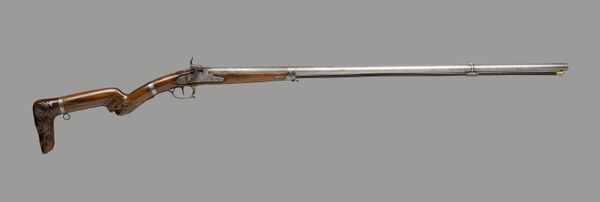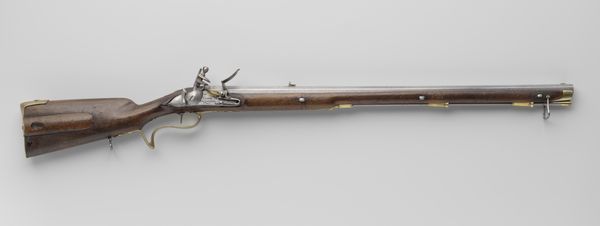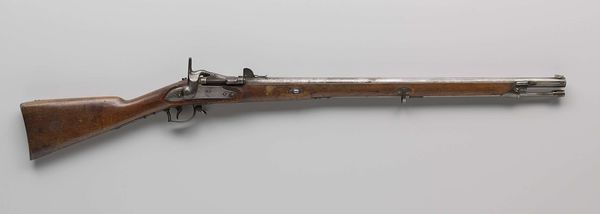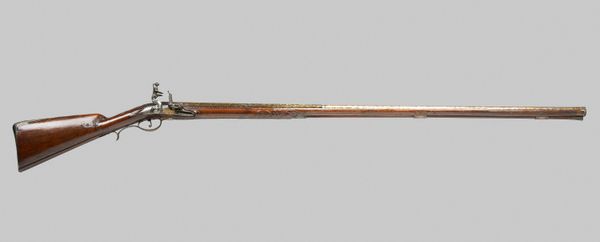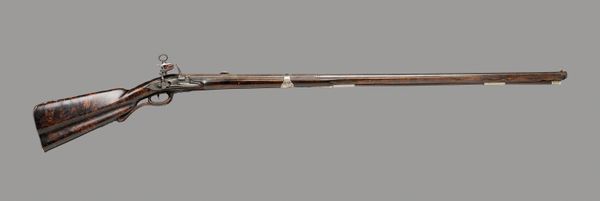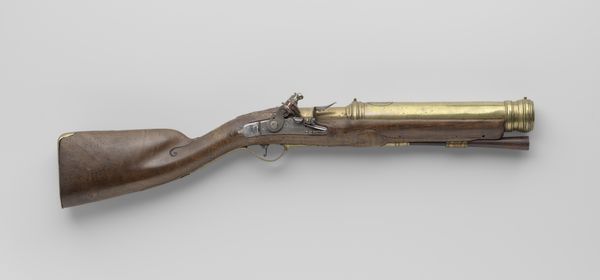
metal, photography, wood
#
still-life
#
metal
#
photography
#
wood
#
realism
Dimensions: length 131 cm, diameter 11 mm, length 79.5 cm
Copyright: Rijks Museum: Open Domain
Curator: This intriguing photograph, "Marinegeweer," presents a detailed study of a rifle dating back to before 1894, created by an anonymous photographer. The materials include wood and metal rendered through photography. Editor: The first impression is undeniably stark. There's a haunting stillness—the firearm's isolation against the pale backdrop invokes a chilling premonition. I can’t help but imagine its impact as an instrument of colonial power and violence. Curator: Precisely. Let’s consider how the arrangement of elements reinforces its starkness. The way the photographer meticulously captures the wooden stock, its grain illuminated, is striking in juxtaposition to the cold steel of the barrel. What is the significance of its medium for you? Editor: Considering the period, I'd point to its implicit commentary on military expansion and control. Weapons like this marine rifle played a significant role in projecting Western imperial ambitions, marking territories, and quelling resistance. Each detail embodies colonial intent. Curator: Indeed. What’s intriguing here is the absence of human presence. The focus solely on the rifle encourages a meditation on pure, unadulterated form—the linearity of the barrel balanced against the curvature of the stock. I find a chilling beauty in its composition. Editor: The choice to capture a still-life of a weapon feels particularly loaded. It abstracts violence, presenting it as an aesthetic object, potentially obscuring its bloody history. Where does the aestheticization of tools of violence leave us? Curator: It raises essential questions, prompting a deeper contemplation on how objects embody both artistry and ideology. Perhaps in deconstructing its composition, we are equally revealing the structure of conflict? Editor: Perhaps—while remaining cautious not to fall into complicity with the system of oppression the tool once promoted. I'm glad that we have revealed how a seemingly innocuous photographic study might reflect darker and more complex histories.
Comments
No comments
Be the first to comment and join the conversation on the ultimate creative platform.




